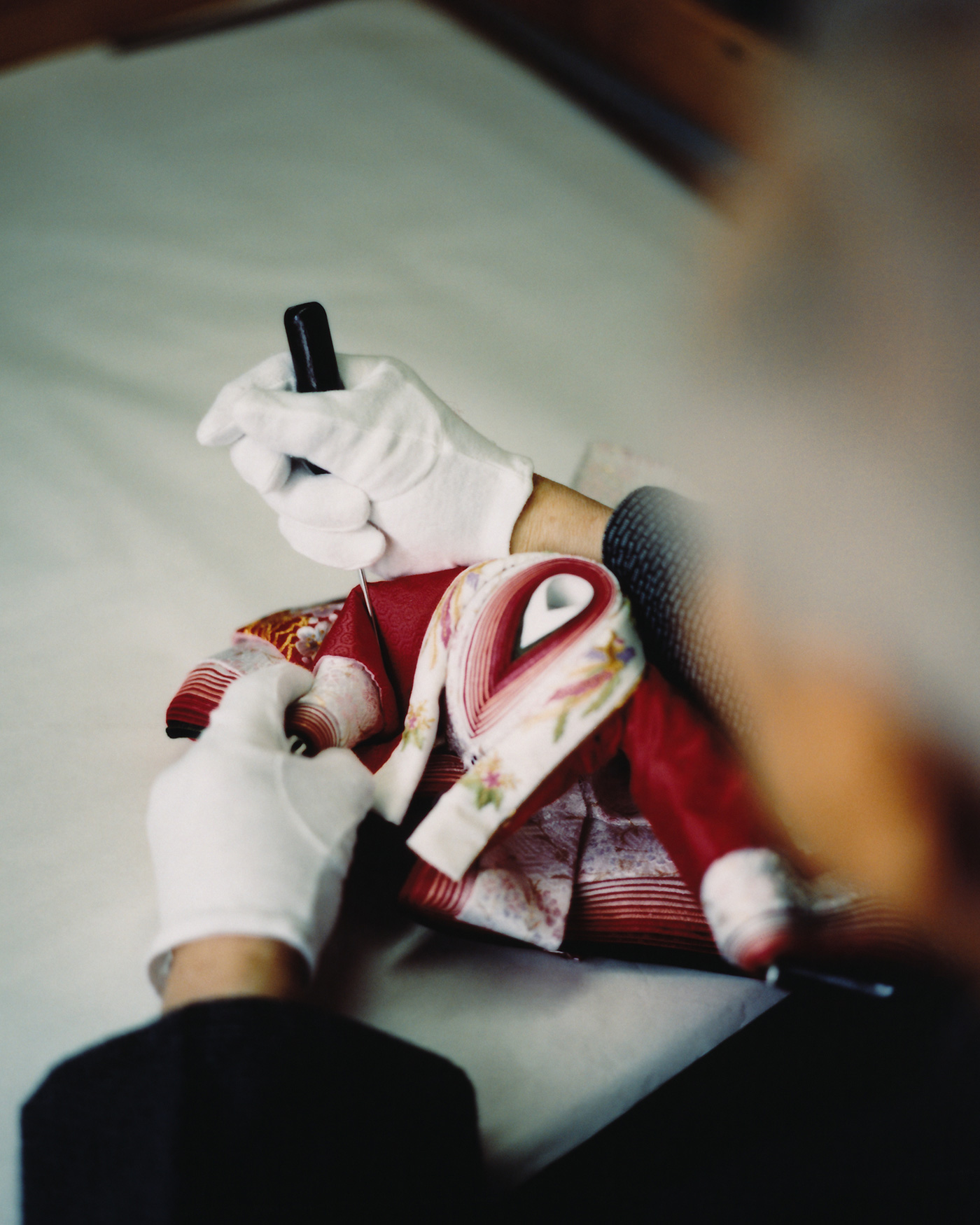You used solid hinoki as the material for this project, right?
We used hinoki from the Owari area. We asked the lumber shop to cut the wood from a set of three pieces because we wanted to match the grain of the wood. It would be nice if people could see the beauty of the grain unique to a single piece of wood.
Plain wood products cannot be sandpaper finished, because they are polished by a kanna (handplanes and spokeshaves for woodworking) finish. With a sandpaper finish, the surface is rough, but with kanna it becomes smooth. With a kanna finish, when water is popped, surface tension causes it to form a ball. With a sandpaper finish, when water is popped, it goes straight into the grain of the wood. In other words, the kanna finish makes even plain wood stain-resistant. Another feature is that when you wipe with a stiff towel, the scent of hinoki fills the room. Hinoki is called cypress in English, but the name hinoki is so well known that it can be used overseas as well, and its aroma oil is also popular.
It is nice to know that the fragrance will last over time if you take care of it.
Temples always smell like hinoki no matter much time passes. That is because the surfaces are polished by wiping them dry or with water. By taking good care of it on a daily basis, it becomes an item that can be used for more than 100 years.

You started with sanbou making, and now you are working on products for daily life for the overseas market. Do you want to continue sharing your work with the world?
Yes, I do. Centering on France, I would like people in various countries to know about our products, without having to stay in Japan. I want people to know that there are still good things hidden in Japan. Our products have been nurtured in the Japanese culture, so if people know the roots of these products, I think the appeal of Japan will be conveyed even more.
What does it mean to make things by hand in an increasingly mechanized world?
We also use machines in some parts of our business, but the final products are finished by hand. There are things that machines cannot do. For example, the condition of wood changes with climate and humidity, and craftsmen can take a first-class product and make it super first-class by identifying and fine-tuning it. Crafts are refined by the sensitivity of the craftsman, and the slightest size adjustment, the choice of grain, and whether or not to use kanna to shave 1/100th of a millimeter off the piece will change the finished product. I guess you could say that it is a craftsman’s skill to make a piece of wood while thinking about how it would look better even if it were a little red. I think the beauty of handmade work is the ability to create something that is not uniform.

It’s like a conversation with nature.
We process the wood while reading the grain, and by touching the wood, we gradually come to understand what kind of processing is desired for this type of wood. We ascertain, “The wood is this hard, it is suitable for this process; it should be used like this.” It is not a simple process of just putting that one piece of wood into a machine and dropping it down to the same width; it is the handwork that goes into the details. I think the greatest advantage of handwork is that you can make the most of the wood’s individuality and modify it to make it shine the brightest.
What kind of people would you like to see use your hand-polished products?
I think wooden products are like children who need a lot of care. I would like them to be used by people who will take good care of them and cherish them, and I would be happy if they can be passed on to their children and grandchildren for generations to come.
Because the items are simple yet a little playful and easy to use, they have a design that can be used for a long time and never get old.







